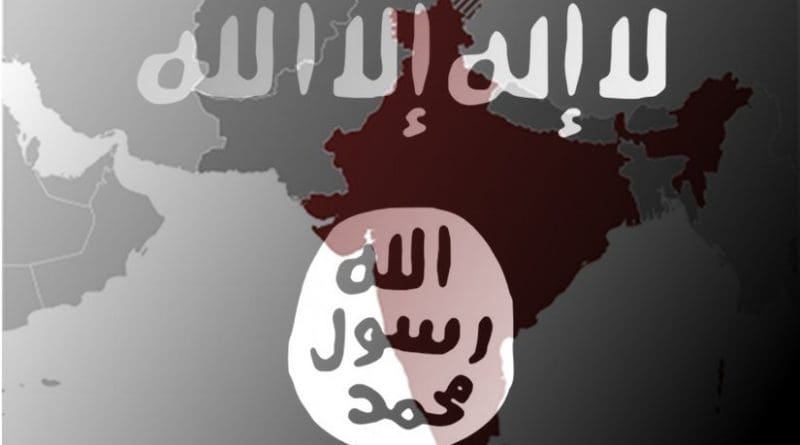Ansar Ul-Tawhid: Evolution And Operational Dynamics – Analysis
By IPCS
By Husanjot Chahal*
In the run up to India’s Republic Day celebrations in January 2016, the National Investigation Agency (NIA) detained 20 men across the country for planning to carry out attacks in the country on behalf of the Islamic State (IS). On 29 January 2016, the NIA arrested three youths deported from Dubai for working as recruiters for the IS.
That Shafi Armar, head of the Ansar-ut Tawhid fi Bilad al-Hind (AuT), was the handler of all these arrested men, underlines the threat the organisation could pose to India in the future. Therefore, the importance of tracing the evolution of the AuT is necessary for a better understanding of the organisation and the dangers it could pose.
Origins
The origin of the AuT, allegedly the first Indian jihadist group based abroad (in the Afghanistan-Pakistan border area), is often linked to a split in the Pakistan-based cadres of the Indian Mujahideen (IM) that took place in 2012 after an internal rift. Senior IM leaders Mirza Shadab Beig and Muhammad “Bada” Sajid had rebelled against Riyaz Bhatkal and Iqbal Bhatkal, preferring to fight in Afghanistan in close alliance with terror organisations such as al Qaeda (AQ) and the Taliban. Among others, Sultan Armar toyed between the idea of fighting in Afghanistan or going to Nepal. He wanted to tie up with international terror organisations in Afghanistan and travel to Syria to join the religious war. Shafi Armar, younger brother of Sultan Armar, was part of the Usaba (congregation), formed in Bhatkal, Karnataka, India, to collect likeminded individuals to wage jihad in India. Like Sultan, Shafi too desired that India also become unstable and violence prone like Iraq and Syria. It is in these thoughts of an expanded war, that the AuT found its early origin.
Emergence of the AuT
In October 2013, the AuT, via its media wing, the al-Isabah media, released a video, titled ‘In the Land of Hind: Usood ul Hind (Lions of India)’, calling Indian Muslims to participate in global jihad. It was the first time the AuT had made its presence felt. A subsequent video, titled ‘From Kandahar to Delhi’ attempted to incite Indian Muslims to take revenge for anti-Muslim incidents in different parts of the country. Another video, released in 2014, called prominent jihadi leaders of the world to come forward and attack Indian targets worldwide. Apparently, all these videos, in which Sultan featured as a masked man, were produced by Shafi.
Allegiances and Activities
It is important to bear in mind that till mid-2014, the AuT seemingly had not developed affiliations with any major terrorist organisation; and the Armars appeared to be ‘opportunists’. The AuT’s propaganda material (as on its Twitter activity) was directed to encourage Indian Muslims to fly to Syria or Afghanistan, primarily to get trained for an eventual insurgency in India; and there were no references of particular terror groups.
It is only by August 2014 that the material carried several texts and videos on the IS’s ideology and military campaign, translated into several Indian languages. Their campaign was probably riding on the military successes of the IS. In October 2014, they officially pledged allegiance to the IS and have since been prominently involved in radicalisation and recruitment of Indians for the IS.
Between October 2013 and March 2015, the AuT released nearly a dozen propaganda videos, posted several messages, promoted books on Jihadi literature on social media, and prominently, released eulogies of ‘jihadi martyrs’. The last such eulogy was for Sultan in March 2015 after he reportedly died in Kobane, Syria, while fighting for the IS. Shafi is understood to have assumed leadership of the AuT after Sultan’s death.
Subsequently, activities under the AuT banner reduced. However, activities to promote the IS, associated with its members, appear to have picked up under Shafi’s leadership, who is believed to be adept at recruiting and radicalising willing youth.
After the AuT initiated its pro-IS campaign, Indian security agencies encountered several instances of youth getting radicalised online and attempting to go to Syria. In the first instance, in September 2014, four youths from Hyderabad, India, were arrested in Kolkata, India, for trying to join the IS by flying to Syria. They were reportedly contacted by Adnan Damudi and Sameer Khan alias Shafi Armar. In April 2015, five youths from Ratlam, Madhya Pradesh, India, were arrested for the same. Investigations revealed that Yusuf alias Shafi Armar had played a role in their radicalisations. Behind all these activities was the AuT’s constant endeavour to emerge as the sole point of contact for the IS in India.
India, the AuT, and the IS
Indeed, the relationship between the IS and the AuT is symbiotic. For the AuT, the IS is an umbrella organisation that can give form and rigour to the Indian jihadist movement, and prepare a pool of trained battle-ready jihadists. South Asia is key to the IS’ expansion strategy, and the AuT can fulfil the IS’s objective by providing a platform to reach a part of the world that houses a large Muslim population. That many of the AuT members possess experience in terrorist acts (through their IM and the banned Students Islamic Movement of India pasts) adds the necessary lethality component for such activities.
India as a result, remains vulnerable to the IS brand of transnational terrorism for which the AuT remains a critical lynchpin.
* Husanjot Chahal
Research Officer, IReS, IPCS

